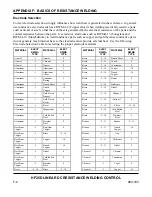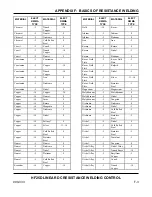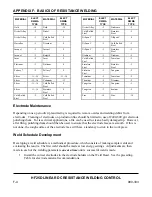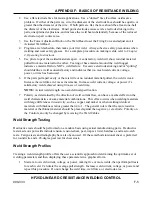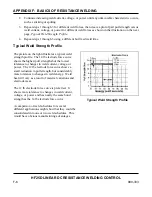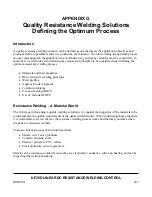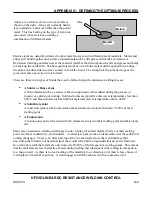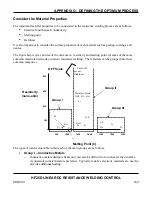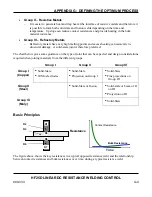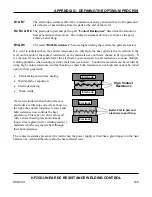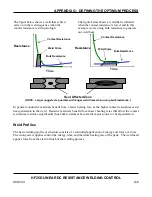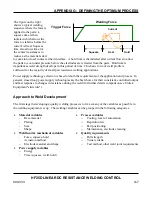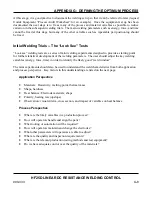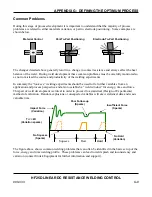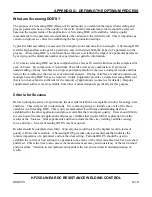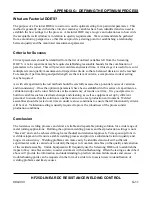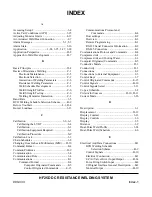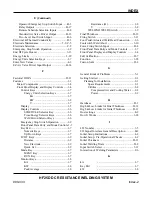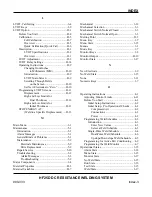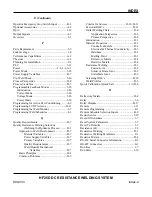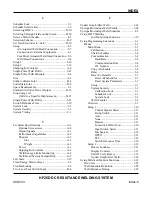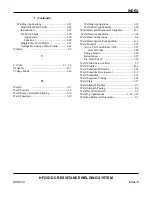
APPENDIX G: DEFINING THE OPTIMUM PROCESS
HF25D LINEAR DC RESISTANCE WELDING CONTROL
990-333
G-10
What are Screening DOE’S?
The purpose of a Screening DOE (Design of Experiments) is to establish the impact that welding and
process parameters have on the quality of the weld. Quality measurement criteria should be selected
based on the requirements of the application. A Screening DOE will establish a relative quality
measurement for the parameters tested and also the variation in the welded result. This is important, as
variation in process is critical in establishing the best production settings.
Typical welded assemblies are assessed for strength of joint and variation in strength. A Screening DOE
tests the high and low settings for a parameter, and will help establish the impact of a parameter on the
process. A Screening DOE is a tool that allows the user to establish the impact of a particular parameter
by carrying out the minimum number of experiments to gain the information.
A five-factor screening DOE can be accomplished in as few as 24 welds with three welds completed for
each of 8 tests. By comparison, it would take 96 welds to test every combination. It promotes
understanding of many variables in a single experiment and allows the user to interpret results and thus
narrow the variables for the next level of statistical analysis. If many variables are still not understood,
multiple Screening DOE’S may be required. Unitek Equipment provides a simple Screening DOE tool
that is run in excel and is sufficient for the majority of applications (contact us for details). Bespoke
sophisticated software is also available from other vendors designed specifically for this purpose.
Criteria for Success
Before running the series of experiments, the user must establish an acceptable window for energy, time,
and force. This will prevent voided results. It is common practice to include one or all of the above
variables in a Screening DOE. This is only recommended if sufficient understanding has been
established for the other application and process variables that can impact quality. Users should first try
to screen out all common application and process variables that require further exploration from the
results of the “look see” mini experiments and then include the three key welding variables (energy,
force and time). Several Screening DOE’S maybe required.
Results should be interpreted carefully. Typically one would look for the highest result in terms of
quality with the least variation. A Screening DOE provides only a measurement that indicates the
relative importance of a parameter and not the ideal setting. Factorial DOE’S should be used to
establish the correct or best setting for a parameter once many of the other variables have been screened
and fixed. This is the time to also assess the measurement accuracy and consistency of the test method
and procedure. Variation in test method can invalidate the test and can lead to misinterpretation of
results.
Содержание HF25A
Страница 9: ...HF25D DC RESISTANCE WELDING SYSTEM 990 333 ix ...
Страница 10: ......
Страница 20: ......
Страница 84: ...CHAPTER 6 CALIBRATION HF25D DC RESISTANCE WELDING SYSTEM 990 333 6 4 Final Calibration Setup ...
Страница 113: ......
Страница 129: ......
Страница 153: ......
Страница 171: ......

